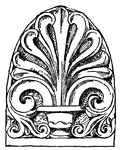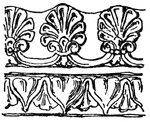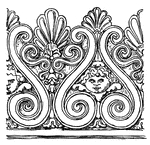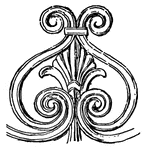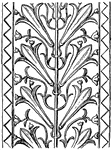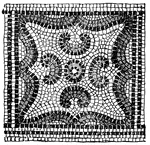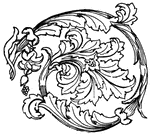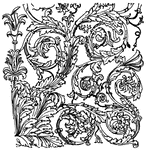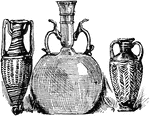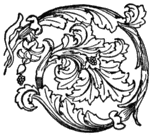Roman Ornament
This ClipArt gallery offers 48 illustrations of ornaments and decorations created during the time of the Roman Empire. See also the Roman Architecture ClipArt gallery.
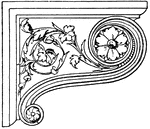
Renaissance Console
This Renaissance console is shown in its side view. It is richly ornamented with spiral curved leaves…
Roman Console
This Roman console is shown in its front and side view. It is found in the Temple of Jupiter Stator…

Roman Console
This Roman console is shown in its front and side view. It is found in the Vatican, Rome, Italy.

Grotesque
"A style of classical ornament, so called, in the 13th century from its having been rediscovered in…

Leaf of Roman Diptych
An illustration of a roman diptych with gold leaf. A diptych is any object with two flat plates attached…

Roman Oblong Panel
This Roman oblong panel is at the underside of the architrave (moulded band) of the Temple of Vespasian…

Rinceau
A band design that includes a round stem, springing from a nest of acanthus leaves, then branching into…

Roman Cameo-Glass
"Ancient Roman Cameo-Glass. Amphora from Pompeii, Museo Nazionale, Naples." -Whitney, 1911
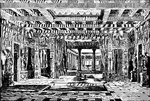
The Interior (Atrium and Peristylium) of Pansa's house at Pompeii, Restored
Illustration of a restored atrium and peristylium of the House of Pansa at Pompeii. The impluvium, pool,…
